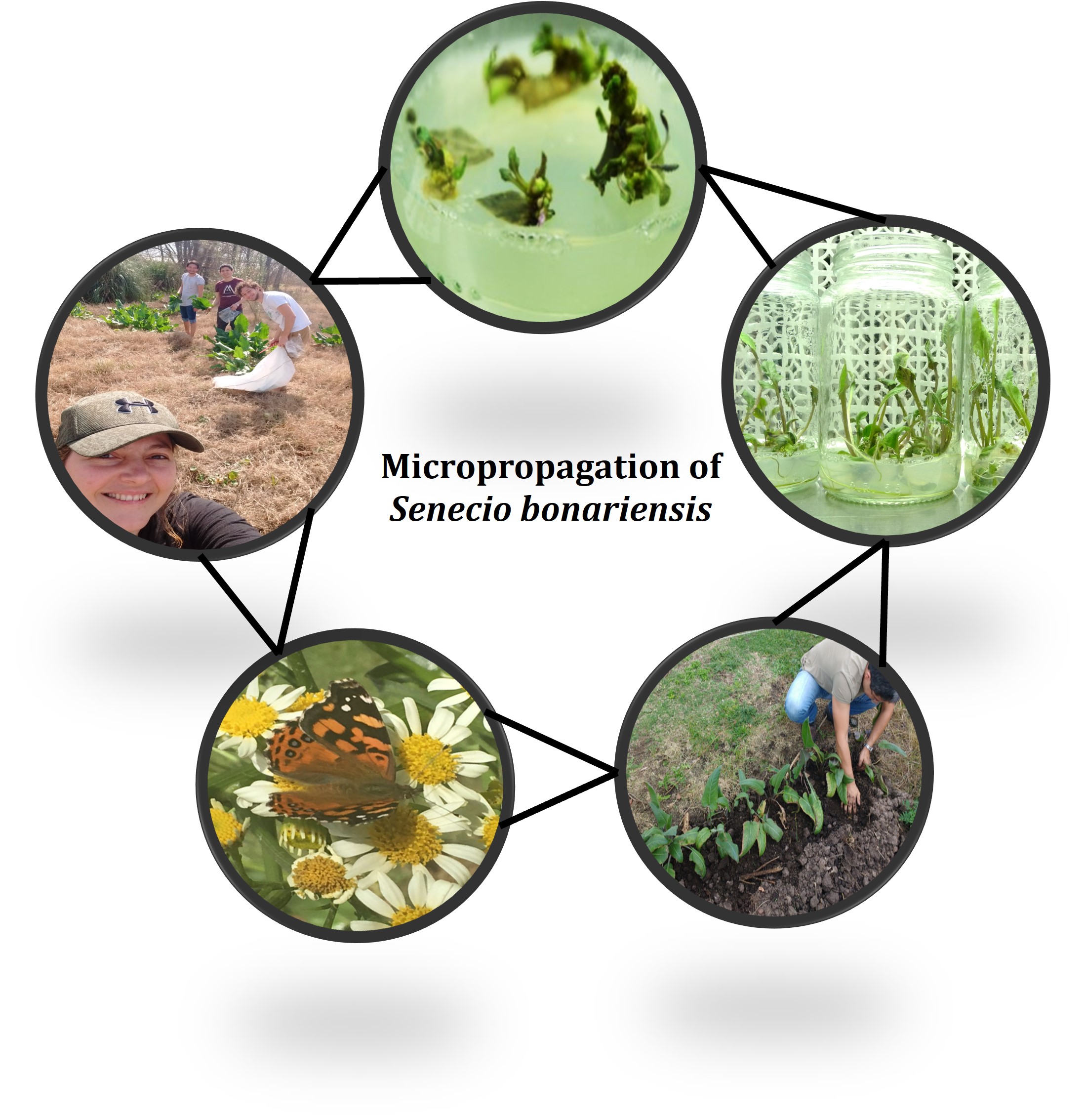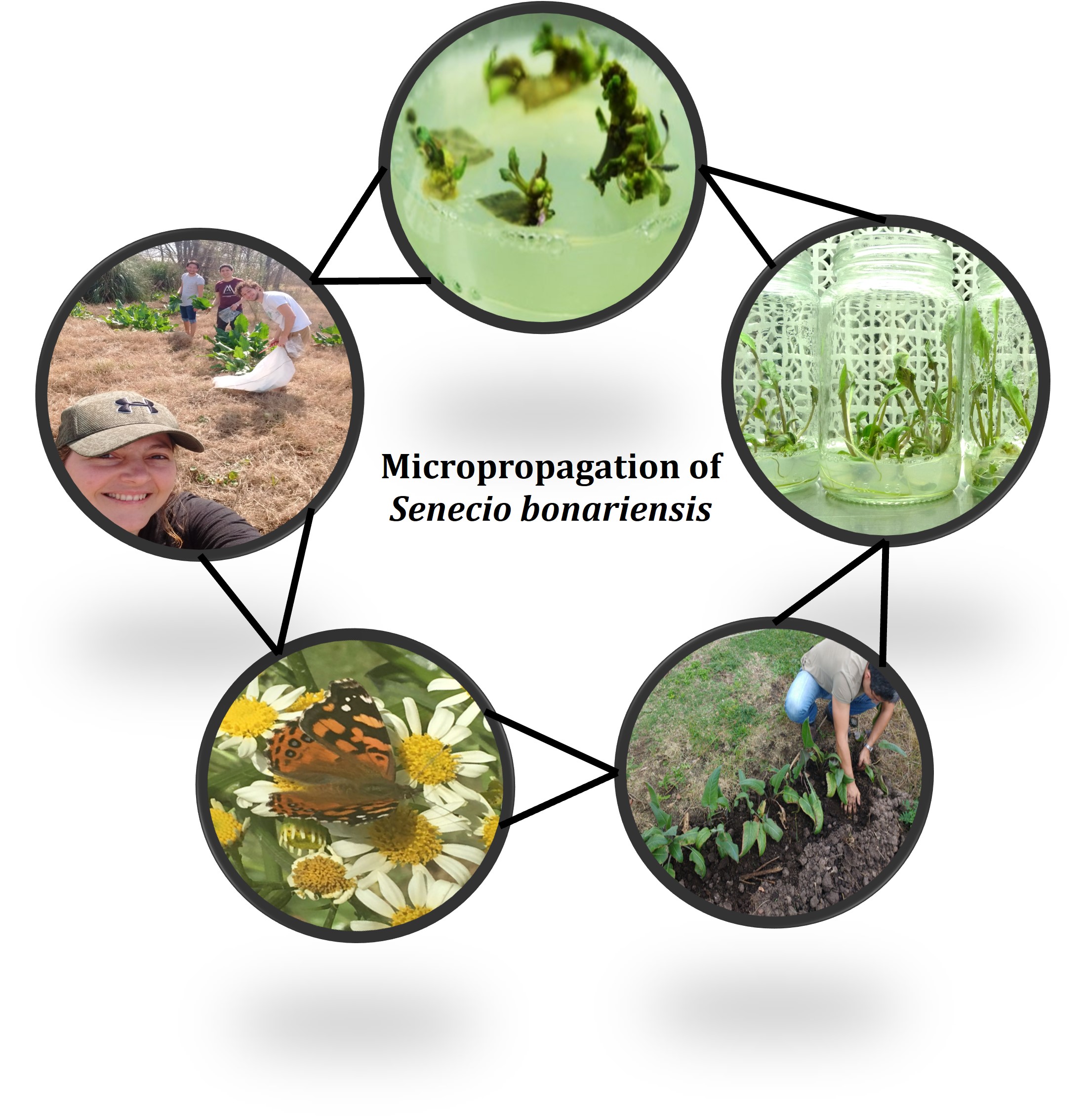In vitro micropropagation and physiological assessment of Senecio bonariensis
DOI:
https://doi.org/10.48162/rev.39.144Palabras clave:
Margarita de bañado, Senecio bonariensis, regulador de crecimiento vegetal, cultivo de tejidos in vitro, conservación, prueba OJIPResumen

Senecio bonariensis is a plant native to South American wetlands. This plant has ecological importance, is used in traditional medicine, and is also popular for ornamental purposes. This study aimed to develop the first in vitro propagation protocol for S. bonariensis. Leaf explants were disinfected and placed on Murashige and Skoog (MS) agar medium supplemented with different combinations of growth regulators. We tested the effect of two different cytokinins: Kinetin (KIN) and 6-benzylaminopurine (BAP), in the presence of the auxin α-naphthalene acetic acid (NAA). All treatments with KIN resulted in root production, but only treatments with BAP induced shoot formation. As results, we determined the optimal concentration for maximum shoot production, achieving a 100% success in rustication while finding similar physiological traits among micro-propagated and wild-type plants. In conclusion, we developed a protocol for the large-scale production of S. bonariensis plants, providing an alternative source of bioactive compounds for medical and pharmaceutical purposes while preserving the natural habitat of this native plant.
Highlights:
- In Vitro Propagation Protocol: The study successfully developed the first in vitro propagation protocol for Senecio bonariensis, a plant native to South American wetlands.
- Growth Regulators Tested: The research explored the effects of two cytokinins, Kinetin (KIN) and 6-benzylaminopurine (BAP), alongside the auxin α-naphthalene acetic acid (NAA), on leaf explants.
- Shoot and Root Formation: While Kinetin induced root production in all treatments, only BAP was effective in promoting shoot formation, leading to the determination of optimal concentrations for maximum shoot production.
- Successful Rustication: The protocol achieved a 100% success rate in rustication, with micro-propagated plants displaying similar physiological traits to their wild-type counterparts.
- Applications and Conservation: The large-scale propagation protocol provides an alternative source of bioactive compounds for medical and pharmaceutical uses while helping to preserve the natural habitat of S. bonariensis. It also offers potential for applications in ecological studies, medicinal research, and commercial landscaping.
Descargas

Descargas
Publicado
Cómo citar
Número
Sección
Licencia
Derechos de autor 2018 Revista de la Facultad de Ciencias Agrarias UNCuyo

Esta obra está bajo una licencia internacional Creative Commons Reconocimiento-NoComercial-CompartirIgual 3.0.
Aquellos autores/as que tengan publicaciones con esta revista, aceptan las Políticas Editoriales.










.jpg)




